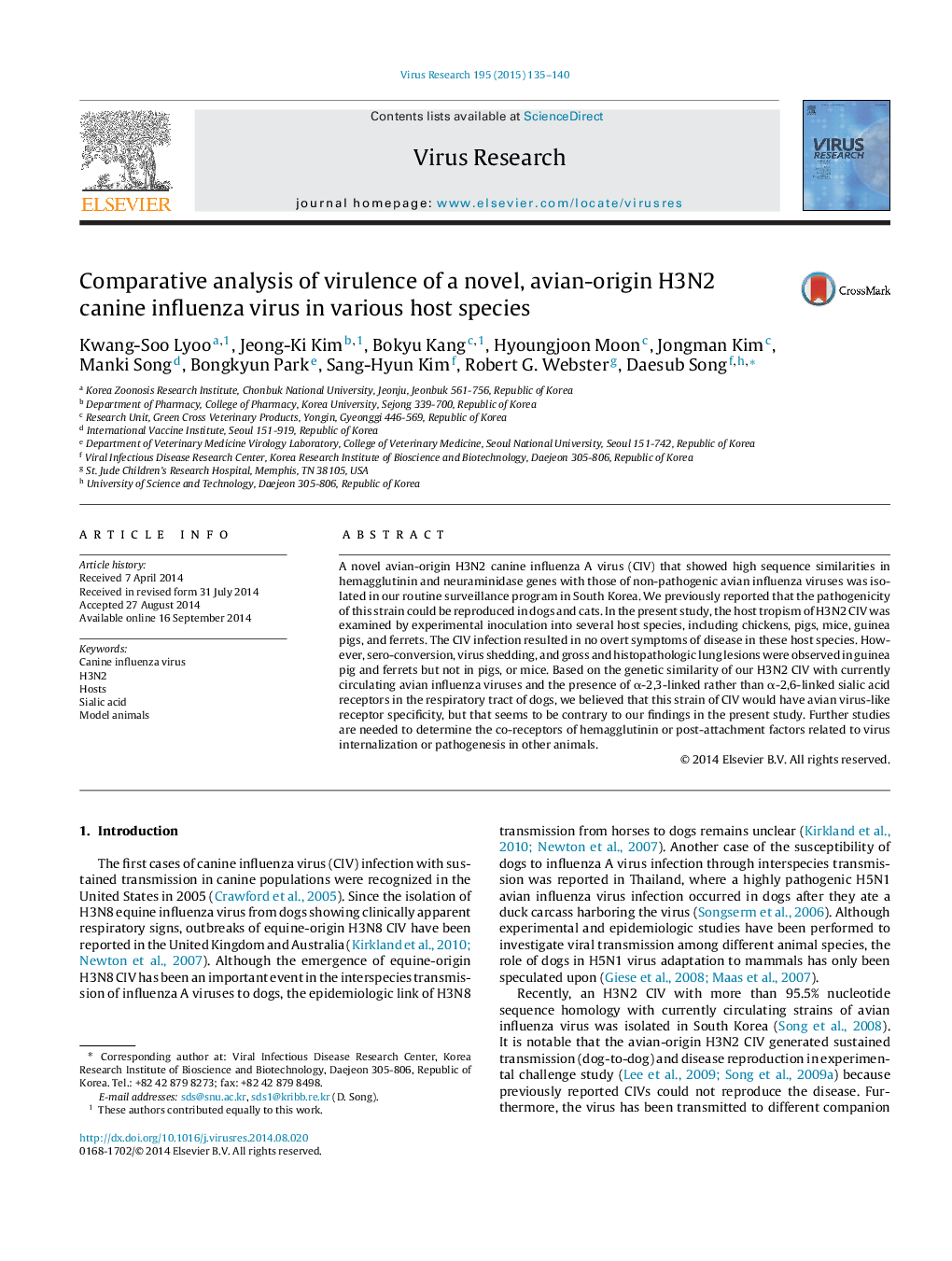| Article ID | Journal | Published Year | Pages | File Type |
|---|---|---|---|---|
| 3428356 | Virus Research | 2015 | 6 Pages |
•The pathogenesis of Canine influenza virus (CIV) H3N2 was first examined and compared in guinea pigs, chickens, pigs, and mice.•It was demonstrated that guinea pigs may be an appropriate model animal of CIV H3N2 infection.•The different patterns of sialic acid expression do not fully explain the ability of many viruses to infect among species.
A novel avian-origin H3N2 canine influenza A virus (CIV) that showed high sequence similarities in hemagglutinin and neuraminidase genes with those of non-pathogenic avian influenza viruses was isolated in our routine surveillance program in South Korea. We previously reported that the pathogenicity of this strain could be reproduced in dogs and cats. In the present study, the host tropism of H3N2 CIV was examined by experimental inoculation into several host species, including chickens, pigs, mice, guinea pigs, and ferrets. The CIV infection resulted in no overt symptoms of disease in these host species. However, sero-conversion, virus shedding, and gross and histopathologic lung lesions were observed in guinea pig and ferrets but not in pigs, or mice. Based on the genetic similarity of our H3N2 CIV with currently circulating avian influenza viruses and the presence of α-2,3-linked rather than α-2,6-linked sialic acid receptors in the respiratory tract of dogs, we believed that this strain of CIV would have avian virus-like receptor specificity, but that seems to be contrary to our findings in the present study. Further studies are needed to determine the co-receptors of hemagglutinin or post-attachment factors related to virus internalization or pathogenesis in other animals.
